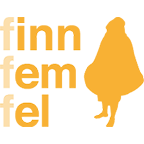Projects realised by
student-groups and finnfemfel
student-groups and finnfemfel
2012, The 17th. International Summer Academy Wismar For Architecture, Design And Art (D)
Arrows To The Tickets, Tickets To The Things You Long For
Carolina De Marco Werner
Brazilian nationality, current on Barcelona – Spain, Universidad Politécnica de Cataluña, BarcelonaTech, Master’s degree in Architectural Technology – Innovation and Constrution.
Shangxin Cao
Shijiazhuang, China,
Qinggong College Hebei United University, Architecture
Zaiming Feng
Shijiazhuang, China,
Qinggong College Hebei United University, Architecture
Ji Chu
Nanton,Taiwan, China,
Nanhua University, Architecture and landscape
Szuyu Lin
Taichung, Taiwan, China,
Nanhua University, Architecture and landscape
We used arrows to guide people to the places we prepared or to find things they normally don’t notice. Another idea is was to put “tickets “on the wall. The tickets were of different kinds. We want to know what people need most. And finally, we combined these two ideas together, thus using arrows to lead people to the tickets we have pasted before. This was done on the street and we hide aside to take pictures of their reactions. The photos are shown in the exhibition, using arrows to connect them all together. It is like the route of a person’s life. He will see different people and things, have different desires and make different decisions. Finally, he will know what he really wants.
Playing in Wismar
Yakun Liu
Shi Jiazhuang, China,
Qinggong College Hebei United University, Architecture
Yuting Tang
Tangshan, China,
Qinggong College Hebei United University, Architecture
Peining Li
Tangshan, China,
Qinggong College Hebei United University, Architecture
Nadine Wust
Ostseebad, Germany, Hochschule Wismar,
Graphic Design
Marta Pérez Campos
Zaragoza, Spain, University of Zaragoza, Fine Arts
Guo Yucheng
Tangshan, China,
Qinggong College Hebei United University,
Young Professor, Industrial Design
Playing in Wismar is an artwork developed in two differents table-objects but at the same time. In one of them, we can see a personal vision of Wismar from the eyes of Chinese, Spanish and German people. We find different skylines where we can see some buildings. Typical images from Spain, Wismar and also from China whose shadows you can move over a record player. They are turning around but without any kind of sound, and it can make the viewer feeling strange. About this feeling the other work in the project finds their basis.
A chinese chess table which has travelled around different streets in Wismar. It has been a real game with the viewers of the performance, while the shadows invite people to play in the exhibition. This second work let us to show the different reactions of the people in the real life in different photographs which are at the same time looking at the shadows of Wismar.
Carrots, MDF, cardboard, record player, vinyl, metal, rubberband
a go
Yufeng Li
Chengde, China,
Qinggong College Hebei United University, Architecture
Elena Lee
Hamburg, Germany,
Technical University Braunschweig, B.Sc. Architecture
Rongxi Cao
Qin Huangdao, China,
Qinggong College Hebei United University, Architecture
Pablo Aznar
Terenes, Tenerif, Spain,
ETSAB UPC Barcelona, Architecture
Guodong Bai
Handan, China,
Qinggong College Hebei United University, Architecture
The project a go deals with the individual perception of surroundings while discovering a new place…
…As we come from very different cultural backgrounds and we are all new to the city of Wismar we found it very interesting to create different mind maps with all the memories that arouse in us while walking through the city to compare our different perception of this town. Then each one of us chose one place in Wismar that awoke a lot of associations and memories. From this we created a structure…
…After building these individual “memory trees” we compared our associations and the memories we had and connected memories of the different group members if they were similar or deeply connected. So this sculpture shows not only what Wismar awoke in each individual team member, but also shows how the different team members are interconnected in their thoughts, emotions and associations.
The labels located at the joints of the structure allow the viewers of the exhibition to learn more about our thoughts, memories and association on Wismar- some revealing, some so abstract that they inspire your associations. Enjoy!
3D structure, bamboo sticks fixed with screws, plastic labels
CIRCULO
Javad Sabetipour
Teheran, Iran,
Electronic and Network Engineering
Multimedia Artist
Sandra Chavarro
Bogota, Colombia,
University of Applied Sciences Basel
Masterstudio Design
Chenhui Tang
Heng Shui, China,
Qing Gong College HeBei United University, Young Professor, Architecture
Jose Ignacio Kempff
Santa Cruz, Bolivia,
Deutsche Schule
Yi Xuan Cui
Cheng De, China,
Qing Gong College HeBei United University, Architecture
Zishi Li
Shi Jiazhuang, China,
Qing Gong College HeBei United University, Architecture.
Our installation happens in a rectangular space. A video is projected on one side; an image is pro- jected on the opposite side. Both, video and image reflect on each other. They are the reflexion of our thoughts and feelings after these 3 weeks we spend in Wismar.
For us, a city is a matrix. It contains elements that are organized in order to allow people to move and habit in it. We perceive the urban environment from a « round perspective »: ongoing actions in constant repetition are happening in the city, creating a circular rhythm of life.
We use our senses to experience and discover a city; we find a circular rhythm in Wismar and its citizens. We find this circular rhythm in simple actions (walking, eating, sleeping, etc.). Life as the least art is the simple but essential things in life: sense, happiness, communication, culture, diver- sity, etc.
Even though we live rutinary lives, we sometimes want to give a different shape to our lives. We choose the bubble as the main component of our installation, as a symbol of all expressions of life. We experienced with different techniques for creating bubbles that will conserved as much as possible for the exhibition and that will leave a trace when disappearing, just as we want to leave a trace at the end of our journey here.
Our installation shows our own perspective towards art, life and Wismar, the one we build with our own life experiences. Welcome!
Changes
Ziyue Gao
Tangshan China,
Qinggong College Hebei United University, Architecture
Fang Song
Tangshan China,
Qinggong College Hebei United University, Architecture
Xiaozhuang Ren
Tangshan China,
Qinggong College Hebei United University, Architecture
Ilia Obukhov
Saint Petersburg, Russia,
Saint Petersburg State Art and Industry Academy, Art History
Ziyue – newspaper
What do you think when you see a newspaper? Do you want to read it? If your answer is “Yes”, it shows that you still live in the two dimensional space which the newspaper brings. Now lets out of the idea to see the Construction of three-dimensional world which also made of newspaper to make a change.
Fang – video
I make a video to think about the style of life. Living as art and admire everything around us, you will find everything is art. Maybe something is rubbish, but in my eyes they are arts.
Big Z – drawing
This is about architecture. I drew on the paper and folded the paper. You will see different kind of architecture if you look at the paper in different way – one side is tradition architecture and on the other side is modern architecture.
What is your feeling when these two different kind of architecture represent on your eyes at the same time in such a particular way? That depends on you.
Ilia – games, various materials
My part of an installation presents popular children games as objects of art. In my view game as an activity has always been a way to improve intellectual and physical abilities. Children play because they try to understand the life with the help of a game. Also they play to improve their physical strength. Game is not a joy, but it is a vital activity.
I believe that art is also a game, but an intellectual one. Art is a mirror of life, and art helps us to realize the rules of the world we live in and to form our ability to think critically. When we percept art, we are involved not only into a visual perception, but also into a kind of a cogitative process.
So play, have fun and try to find your own meanings in these objects.
Process of Movement
Cong Liu
Tangshang, China,
QingGong College HeBei United University
Architect
Bita Shirkhanbeik
Teheran, Iran, Architect
Lin Guo
Tangshang, China,
QingGong College HeBei United University
Architect
Liang Qu
Tangshang, China,
QingGong College HeBei United University
Architect
Florian Enßle
Berkheim, Germany,
Architect student, HS Augsburg
Internalizing the topic “When life is the least Art…” our group concluded the response“… when the freedom for evolvement is missing”. Working in Wismar we recognized many empty, abandoned buildings, a good example for our response. Starting with the work we wanted to include these places back into the city. A first suggestion was to project a movie on one of these empty house walls, a movie taken from jellyfish, which beauty caused our attention visiting the harbour. Working on the jellyfish, watching them in our aquarium, recording them in many ways and drawing them, the jellyfish became more interesting each day. New thoughts came up and many ideas how to analyse and descried them. The most unique peculiarity about the jellyfish is their movement. Inspired to analyse their way of shifting we tried to describe their movement in many different ways and finally came up with a sculpture, which consist of rings stringed after another. The rings were reference from photo series we did from the jellyfishes.
Analysing the process of the movement of the jelly fish a sculpture, produced of wool, paraffin and fishing line, came up to be an abstract of movement. Moreover photo series and a video, which helped us to analyse the movement of the jellyfish is presented in this exhibition. The pin board shows the most important documents which where produced over the last weeks.





